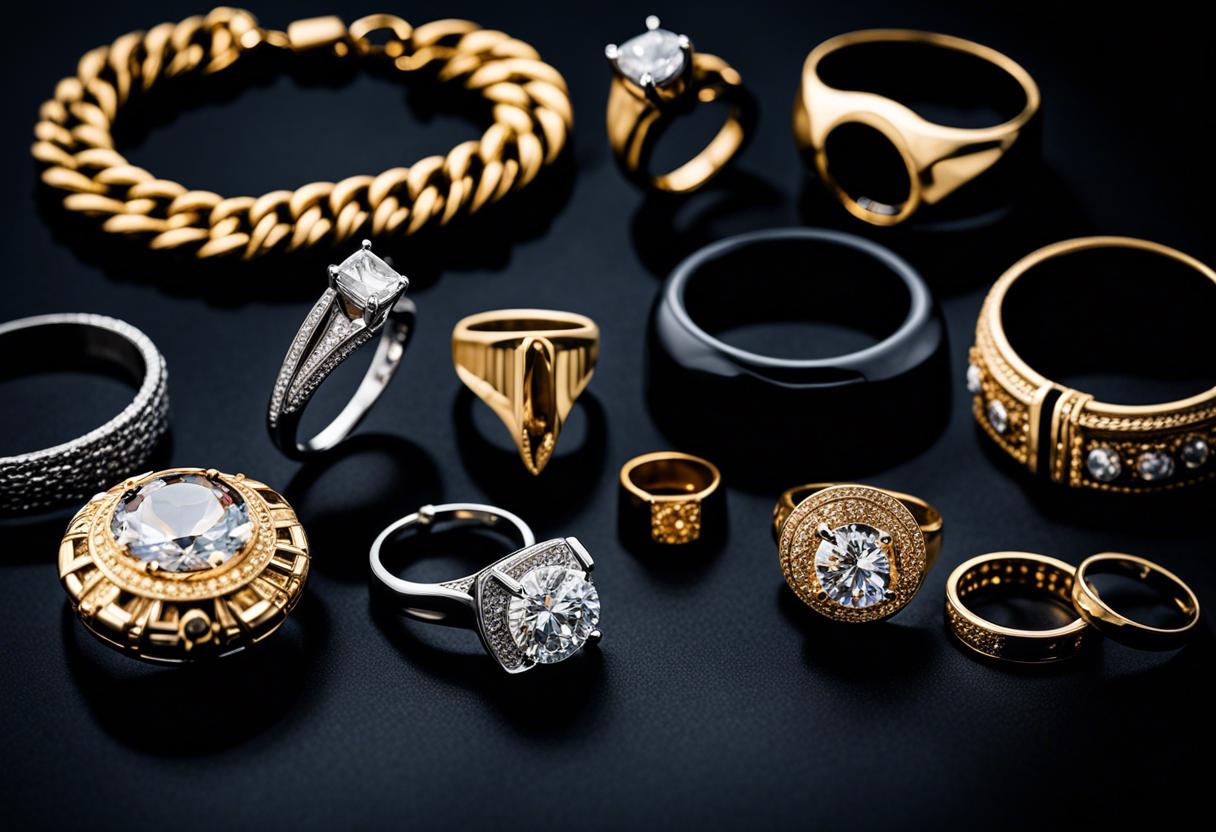Contrary to the common assumption that jewellery for men begins and ends with a wristwatch, it’s a historical fact that men were actually the ones who were splendidly adorned. From the ruby-studded robes of Henry VIII and Charles I’s pearl earring, to the Edwardian gentlemen’s love for adorned pins, extravagant embellishments were a staple for men.
Once more, history is repeating itself with male celebrities emerging as trendsetters in the world of jewellery. From Timothée Chalamet to Barry Keoghan, this year’s awards season was all about men flaunting diamond-laden and gem-studded brooches, chokers, and cocktail rings.
While it may be currently trending, according to Dublin-born copywriter, Gavin Manley, who regularly contributes to New York’s Ac Magazine, this jewellery trend in men’s fashion started in the US a couple of years ago. Flashy brooches, oversized pendant necklaces, and chunky rings by brands such as Burkindy and Orttu, based in Brooklyn, have become regular accessories for not only club-goers but also those sporting street styles across New York’s subway system.
For some men, of course, jewellery has always been a passion. Pop sensation Harry Styles influenced a surge in the popularity of pearls when he wore a single pearl earring to the Met Gala in 2019. Likewise, fashion influencer and music mogul Pharrell Williams published a book, “Carbon, Pressure & Time: A Book of Jewels” that features his lifelong obsession with unique and extravagant gem pieces.
Moreover, Irish designer Peter O’Brien is an avid collector who’s been collecting brooches since purchasing his first one, a small fake aquamarine heart, from John Farrington 40 years ago. Commenting on his love for pins, he described the wonderful irregularity of the hand-cut stones in old brooches, and how the oxidised surround makes the stones stand out. For him, pins perfectly enhance his everyday attire of a peacoat, navy merino knit and chino trousers.
The idea of hiring jewellery, a practice common amongst celebrities for red carpet appearances, confounds Jake McCabe. To the 30-year-old creative director and Dundalk native now residing in London, buying jewellery should be an intimate action rather than a fleeting trend.
McCabe has cultivated a taste for unique pieces, developing a more refined aesthetic from the flamboyant skateboarding jewellery he favoured in his youthful years. Amongst his most cherished items are a signet ring emblazoned with his family’s slogan, gifted from his girlfriend, a pocket watch from his father, originally given by his mother on a significant anniversary, and an Omega Speedmaster 38mm watch, a personal purchase.
This watch signified a key period of transition in his life and he chose Omega for its well-embedded reputation for design brilliance and engaging narrative.
He also admires the Edge Only, an Irish brand and is particularly fond of a bulky geometric ring he’s possessed for several years, along with Sinéad Murphy’s Cosmic Boulevard collection.
Around London, he observes his contemporaries sporting rings, watches, or religious amulets such as miniature crucifixes or St Michael’s coins. Younger men are seen wearing pearl necklaces.
In his opinion, the lavish jewellery displayed during the awards season is excessive. Big brands might use these events to raise awareness. However, the men McCabe knows are more interested in owning personalised and significant pieces, which they could possibly pass on as heirlooms.
Beyond the glare of the red carpet, owning a piece of jewellery is more of an experience. It forms a crucial part of an individual’s narrative.
Síne Vazquez, a designer of high-quality jewellery, concurs with this observation. Though most of the pieces she creates for her male clients are wedding rings, she has noticed a noticeable rise in men who possess very detailed design ideas.
“The previous year witnessed the creation of a distinctively personal jewellery piece featuring the Dartry mountains that held special significance for a couple who enjoyed hiking there frequently. The piece was initially for the groom. Subsequently, his wife ordered a replica to be worn on her right hand.
The brilliance of jewellery lies not in the gender it’s designed for but the avenue it provides for self-expression. The traditional gender roles have been subverted, with males adorning pearls and women choosing skulls.
Echoing this sentiment, a master goldsmith from Mayo named Nigel O’Reilly recently crafted an exclusive, diamond-encrusted, rose gold brooch, intended for both genders. The jewellery ranges for men and women by Simone Rocha are completely identical.
With the unveiling of the first men’s fine jewellery line from Louis Vuitton in January, the artistic director of watches and jewellery, Francesca Amfitheatrof, addressed the gender-neutral aspect of the collection. The intention was to create something as universal as blue jeans.
This trend signals a major shift in the fashion industry, with the lines between masculine and feminine styles gradually blurring. It seems diamonds, traditionally perceived as a woman’s best friend, are not exclusive to them anymore.”

